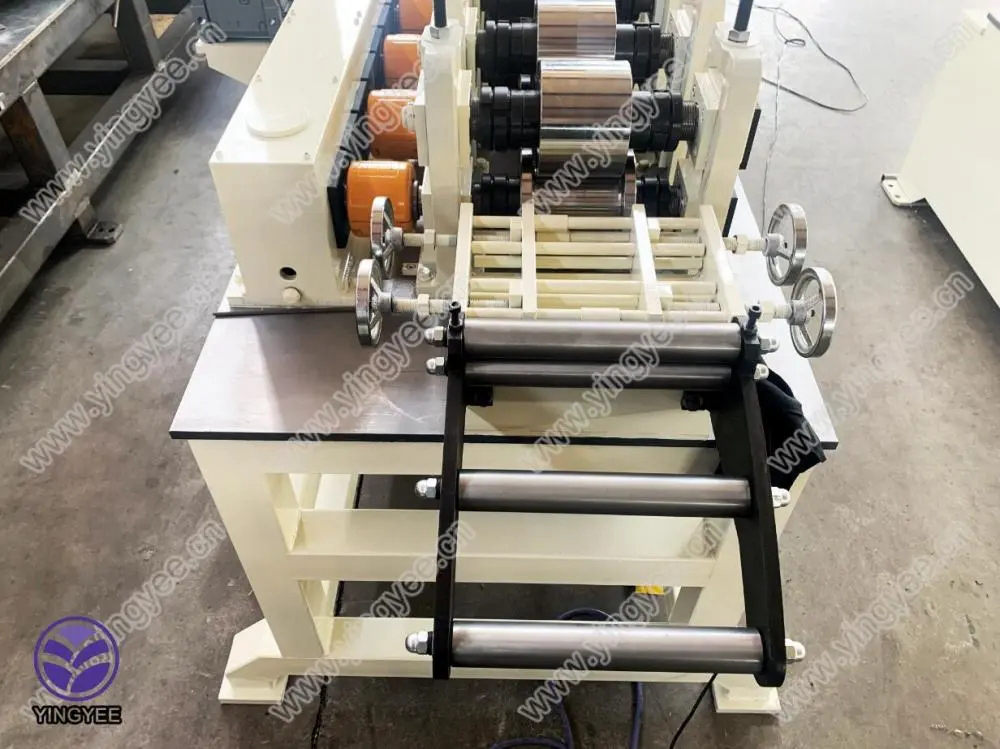
Stud and Track Keel Roll Forming An Overview
Roll forming is a highly efficient manufacturing process used to create metal parts with consistent cross-sections. Among its various applications, stud and track keel roll forming stands out due to its utility in constructing reliable framing systems for buildings and structures. This process involves several critical steps, from material selection to the final forming of the stud and track components, culminating in a product that meets specific engineering standards.
Understanding the Basics
At its core, the stud and track system is integral to the construction of light gauge metal framing, often utilized in commercial and residential buildings. The studs serve as the vertical supports, while tracks function as horizontal pieces that anchor the studs in place. They are typically made from steel, which provides strength, durability, and resistance to various environmental factors such as moisture and pests.
The Roll Forming Process
The roll forming process begins with the selection of raw materials. Cold-rolled steel is the most commonly used material due to its excellent mechanical properties and ease of fabrication. Once the material is selected, it is fed into a roll forming machine, consisting of a series of rollers that progressively shape the metal sheet.
1. Set-Up The first step in roll forming is setting up the machinery and configuring the rollers according to the desired profile of the stud or track. Each roller plays a crucial role in shaping the metal. The precision of this set-up is vital as it directly affects the final dimensions and quality of the product.
2. Forming In this phase, the metal strip is continuously fed through the rollers, which gradually bend the strip into the desired cross-sectional shape. For stud profiles, this involves creating C-shaped or U-shaped sections, while track profiles are typically a bit wider and are designed to accommodate the studs securely.
3. Cutting Once the desired shape is formed, the continuous length of the metal is cut to specific lengths. This can be done using shearing techniques, where the metal is cut without deformation, ensuring a clean edge. Precision in the cutting stage is critical, as any inaccuracies can lead to issues during the assembly stage.
4. Finishing After cutting, the formed components may undergo additional finishing processes, such as deburring or coating. Protective coatings can be applied to enhance corrosion resistance, thereby improving the lifespan of the components in various environments.

Advantages of Stud and Track Roll Forming
The roll forming technique offers several advantages over traditional manufacturing methods for stud and track components
- Cost Efficiency Roll forming is a highly automated and continuous process, which reduces labor costs and increases production speed. This efficiency makes it a cost-effective solution for producing large quantities of components.
- Material Utilization The process minimizes waste, as it optimally uses the width of the raw material. This not only reduces costs but also aligns with environmentally-friendly manufacturing practices.
- Consistency and Precision The automated nature of roll forming ensures that every piece produced meets strict dimensional tolerances. This consistency is crucial in construction, where precise measurements are vital for structural integrity.
- Flexibility Roll forming machines can be easily reconfigured to produce various profiles, allowing manufacturers to meet different customer requirements without significant downtime.
Applications in Construction
The stud and track systems created through roll forming are integral in various construction applications. They are widely used in wall assemblies, ceilings, and partition systems, significantly contributing to the lightweight construction trend. Their robustness allows designers and architects to create flexible building designs while maintaining safety and compliance with building codes.
Conclusion
Stud and track keel roll forming is a sophisticated process that accommodates the demands of modern construction. By understanding its intricacies and benefits, manufacturers can leverage this technique to produce high-quality, reliable framing systems. As construction practices continue to evolve towards efficiency and sustainability, roll forming technology will undoubtedly play a critical role in shaping the future of the building industry.